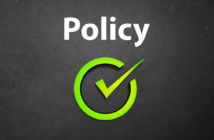What is branding? Is it your logo? Is it social media? Sales? Or, is it really fluffy words a sketchy person says to get money out of you? Besides, your company may be doing just fine with just sales and service. Or, your company may have a Marketing Department, so what does it matter to you?
The company brand is its identity. Every employee should know it and understand his or her role with it. The clearer the corporate identity, the easier it is for everyone who associates with the company.
The company benefits because revenue, customer recognition, customer service, customer loyalty, employee loyalty, and innovation increase. Hiring becomes easier, operations are streamlined, and the company builds its competitive edge in the marketplace.
Employees benefit since a clear corporate identity increases employee loyalty and streamlines operations. The more an employee understands how his or her role fits with the brand, the stronger the employee connects throughout the company and with clients. For example, “processing and tracking orders becomes easier for” suppliers and sellers, says Abhijeet Pratap. Plus, if the employee also believes he or she is “a good fit” with the brand, then employee morale, loyalty, and retention increase.
Because your company’s bottom-line benefits thanks to heightened customer loyalty, existing clients benefit with quality and innovation. Loyal customers look to the company to provide the same reliability, product quality, and customer service as in the past. As they build trust with the company, they are more apt to buy a new product or service. After all, aren’t you more willing to try a new idea from someone you already trust?
Potential clients benefit because a clear identity simplifies the buying process. Potential customers seek opportunities to buy from companies with characteristics or values they want or relate to. If a customer needs a service quickly, then she purchases from a company with a reputation she prefers. Yet if she’s looking for high-quality, long-term service, then she might choose another company with that reputation. Both brands are purchased because of their strengths, have characteristics that appeal to the same customer, and are needed in the marketplace.
Step 1 – Decide.
Some may say the first step to branding is to hire a marketing agency. While effective for many, I don’t believe it is a necessity for smaller businesses. You can do this yourself if you’re open, honest, and willing to seek input. The more people and perspectives involved, the better. Work through the process one step at a time.
Step 2 – Lay a solid foundation.
A corporate identity represents the entire company. Begin with its main characteristics. Fully understand your company’s identity, and you can take your branding efforts as far as you’d like.
Start by taking in the information. Ask questions, and accept answers. Ask who, what, when, where, why, and how. Name what the company is, does, and how others experience it. Address the big and small things. Name the geography served, if it is a family-owned company and other characteristics which make it unique. Describe the company identity in length and go into detail when possible.* Ask as many people as possible internally and externally whether they know the company well or not. Clients provide your most helpful insights. Consider all aspects of the company experience such as a retail transaction, good and challenging customer service experiences, how the company treats its employees, a meeting with other corporate executives, and how its employees interact with the community.
Step 3 – Be honest.
Determine which characteristics are trends throughout your company. Then, break down the common denominators to list your main values. Don’t exaggerate or stretch the truth. If employees consistently provide a certain type of experience, then it’s part of your identity whether you like it or not. If they provide average customer service yet have a strong record of timeliness, accept both as part of your brand.
Stick with the qualities you currently have as you build others you want and can be known for later. There’s no way for a company to force values it doesn’t have. If corporate leadership wants everyone to provide superior customer service and the company says it’s part of its brand, customers figure it out quickly and no longer trust the company. Typically, they show distrust by not returning as customers.
Consider Walt Disney World, Resort in Florida. (I worked there. So, I’m opinionated. But, it’s a great example.) Different people enjoy and relate to different values of its brand. That’s good! These values broaden its customer base. For you, its brand may represent magic or happiness. Or animated characters, movies, or entertainment. Or power, marketing, or family. Or, cleanliness, long lines, expensive tickets, or the ideal family vacation. Or safety, courtesy, efficiency, or show. All are part of its brand. Its brand is different for different people, and all these people are right. As Disney builds upon its established values, each attracts new customers who find them appealing and keeps existing customers coming back for more.
Step 4 – Putting it into practice.
Consider what a trucking business might do. A family-owned trucking business for three generations may not think its family history is applicable to the brand because its history is old news and daily life. But, chances are values associated to its history helped build its success and brand. Therefore, focus on those characteristics:
Company: Family & Sons Trucking
Corporate characteristics (values): dependability; reliability; respect (amongst employees and with customers); primarily serve local residents but welcome others; always up on the latest products and services; not the quickest with customer service, but they always ask about customers’ family members because they know them through the childrens’ schools, sports, or perhaps the bar.
Think of ways Family & Sons Trucking can make the most of its brand. . .
Employees wear nametags. They welcome customers by name as they walk in and record the personal needs and happenings as they walk out (such as hospitalizations, babies, or graduations). A couple of administrative employees each week send cards, post on social media, and make phone calls according to the recorded needs. External signage is easy-to-read. Advertisements are in local diners. Marketing materials feature local residents. A Christmas tree is put up during the holiday season. The company partners with the local high school to hire one or two students each year in their first job. Its employees and founding family members attend local little league games, sponsor a team, and hand out discounts on the back of business cards to fans of their favorite team.
The Family & Sons Trucking brand is palpable. Yours should be, too. Be obvious and sometimes obnoxious when spending time and money on it – the more you do, the stronger it becomes, and the more impact it will have on your bottom line. Acknowledge an employee who demonstrates one of its positive characteristics. (A verbal recognition goes a long way.) Address the brand at small and large meetings. Post flyers about the brand in the bay. Incorporate it as a measurable action item in meetings with direct reports at every level.* Have departments share with other departments how it already carries out the brand as well as new ways it can. Carry out a company-wide campaign rewarding these values.* Engage employees – they embody your corporate identity, and their actions speak louder than words.
*Newfound stories and those discovered in original research provide examples of success. They educate and inspire new employees, recognize experienced employees, and provide stories for marketing, public relations, and advertising to accurately portray the company.
Step 5 – Spend money.
It is usually overwhelming to monetize branding efforts. After all, it is part of every process and protocol. Before you start spending money,
- consider your strategic goals, and
- consider the first places you will have the most impact.
Some say everything must be done at once. I suggest to do what you can and be practical. Haven’t you ever experienced a company which was recently re-branded yet is using the rest of its letterhead or business cards until they run out?
Begin. Then keep moving forward. Be diligent. Set a timeline of a few months (no more than six). Brand (or re-brand) one category at a time. Print all the company signs one month. Then invest in branded shirts for all employees the next month. The quicker, the better, and be realistic about your resources.
When spending money, visuals are important and remembered. For example, a brand is more than a logo, it is a visual representation of the company’s identity. Consider additional visuals representing a brand – colors in the logo, style of the website, pictures used in the annual report, cleanliness of trucks, signs pointing toward the office, smiles on employee faces (or not!), the tv commercial, every detail of the trade show booth, business cards, billboards, and really everything you can think of.
Basics to create or update in branding or re-branding efforts:
- Company name
- Tagline
- Colors (Use color codes to keep consistent colors, don’t just say red or blue. Use CMYK or PMS codes for print work and HEX or RGB codes for online projects.)
- Logo
- Brand guidelines
Common items to brand or re-brand are:
- Signage (internal and external)
- Shirts/uniforms
- Trucks, company vehicles
- Letterhead, invoices, newsletters, operating manuals
- Website, online listings, email signatures, voice mailbox greetings
- Employee name tags, business cards, individual online profiles
- Pens and other SWAG
The Masters
Consider strong brands. Whether or not you’ve personally experienced the company, you already know the brand. Consider each of the following brands and what sets it apart from its competition.
- Chick-fil-A
- Ford
- Coca-Cola
- YETI
Getting creative
If part of your company vision is to become “the next ____,” then look at how the model company spends money communicating its brand. Also, think about what you think the company should do – and do it for your company!
Consider companies in other industries. For especially effective ideas, focus on companies serving your same target customer such as:
- Harley-Davidson
- NASCAR
- The SEC
- Disney
- Any company your ideal client uses.
Live out the brand
Your brand already represents your company. Share it with everyone and watch revenue, customer loyalty, employee retention, and new customers increase.
The Consultancy is a GMTA Affiliate Member. It provides marketing, sales, and communications solutions. Save yourself time by allowing The Consultancy to do the work – or to teach you to do it. Schedule a time to talk with your Consultancy Representative at your convenience.
www.fortheconsultancy.com



